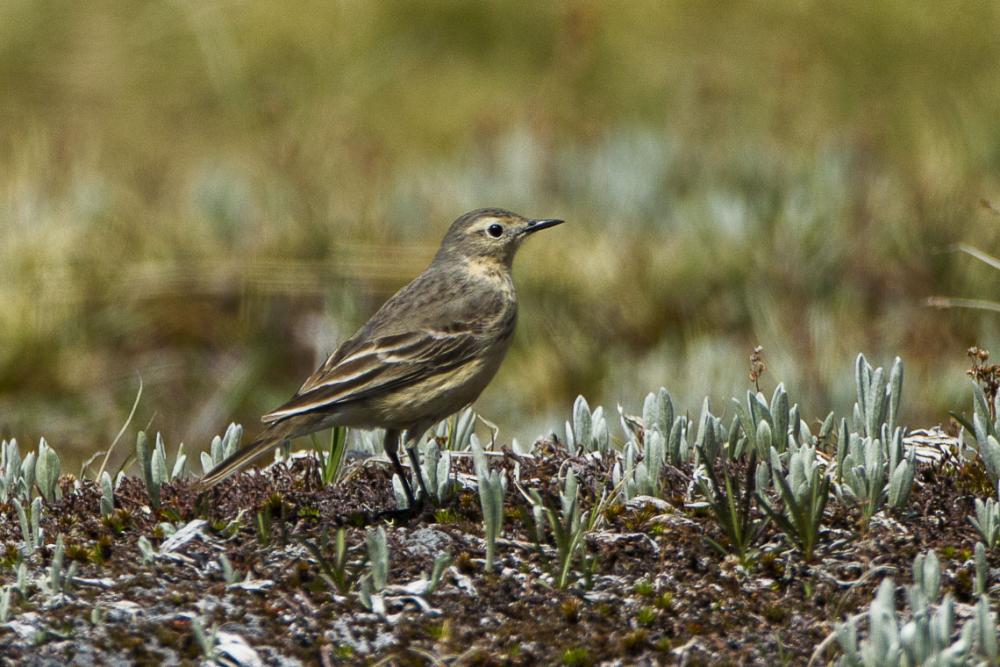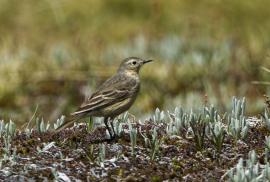Guide to Boreal Birds
Overview
The American Pipit was formerly considered a form of the Water Pipit of the Old World. The absence of a breeding species of pipits in the open country of the eastern United States is due to the fact that until recently forests covered this area. In winter large flocks gather in open fields; when disturbed they rise in unison, wheel, turn, and resume their feeding. In the North the American Pipit feeds on the countless insects on the edges of tundra puddles, whereas in alpine meadows it visits unmelted snowbanks. Warm air rising from valleys below transports many insects to high altitudes; most of these die and are frozen in snowbanks, providing food for the pipits.
Description
6-7" (15-18 cm). A sparrow-sized, slender brown bird of open country. Crown and upperparts uniform brown; underparts buff with streaks; outer tail feathers white; legs usually black. Often bobs its tail and usually walks rather than hops. Sprague's Pipit has a streaked back and yellow legs, seldom bobs its tail.
Voice
Flight song a weak and tinkling trill; call a paired, high-pitched pip-pip.
Nesting
4 or 5 gray eggs, thickly spotted with brown and streaked with black, in a cup of grass and twigs built on the ground in the shelter of a rock or tussock.
Habitat
Arctic and alpine tundra; during migration and winter, beaches, barren fields, agricultural land, and golf courses.
Range/Migration
Breeds from northern Alaska, Mackenzie, Canadian Arctic islands, and Newfoundland, south in mountains to California, New Mexico, and northern New Hampshire. Winters across southern states and north to British Columbia and southern New England.



